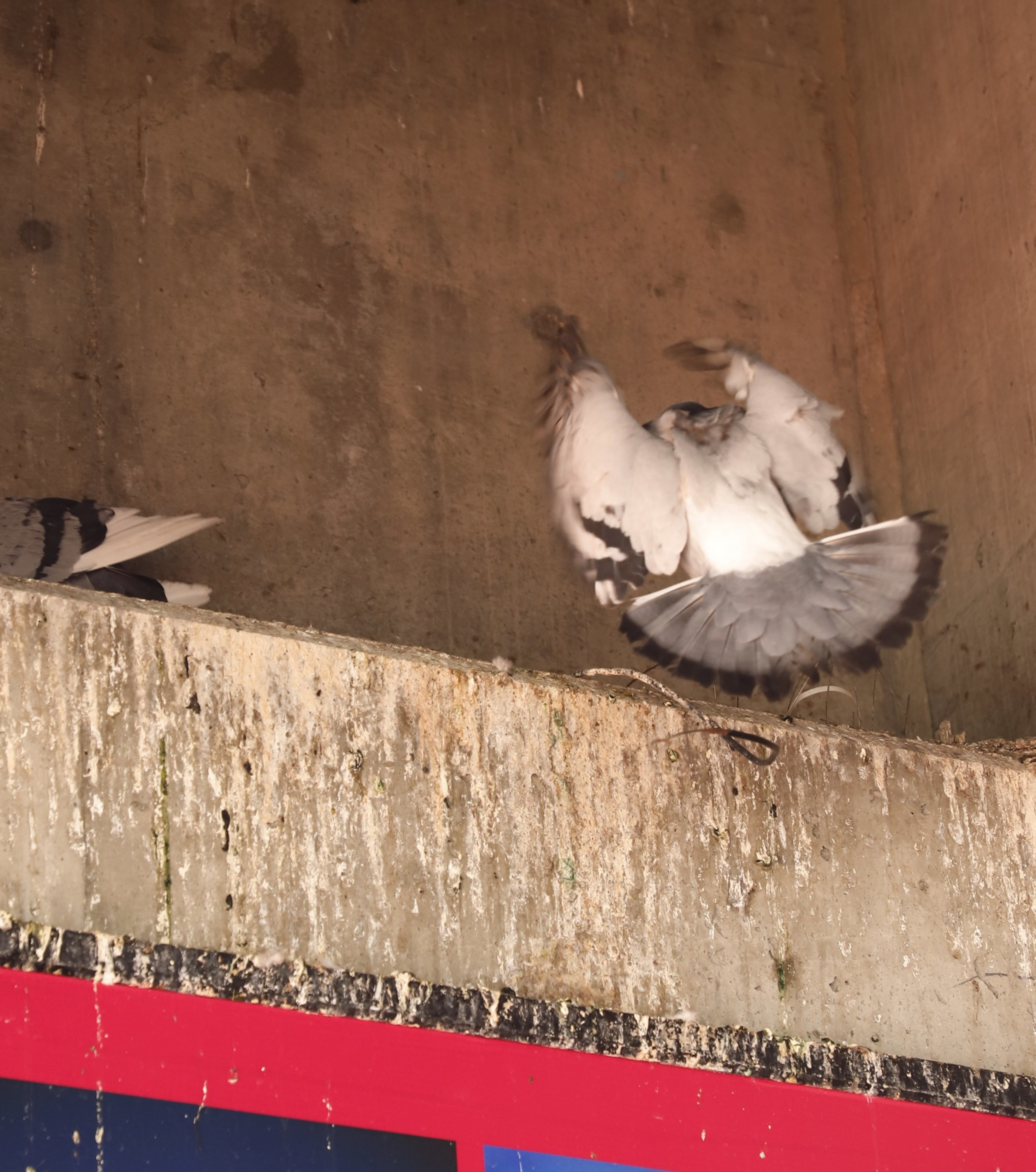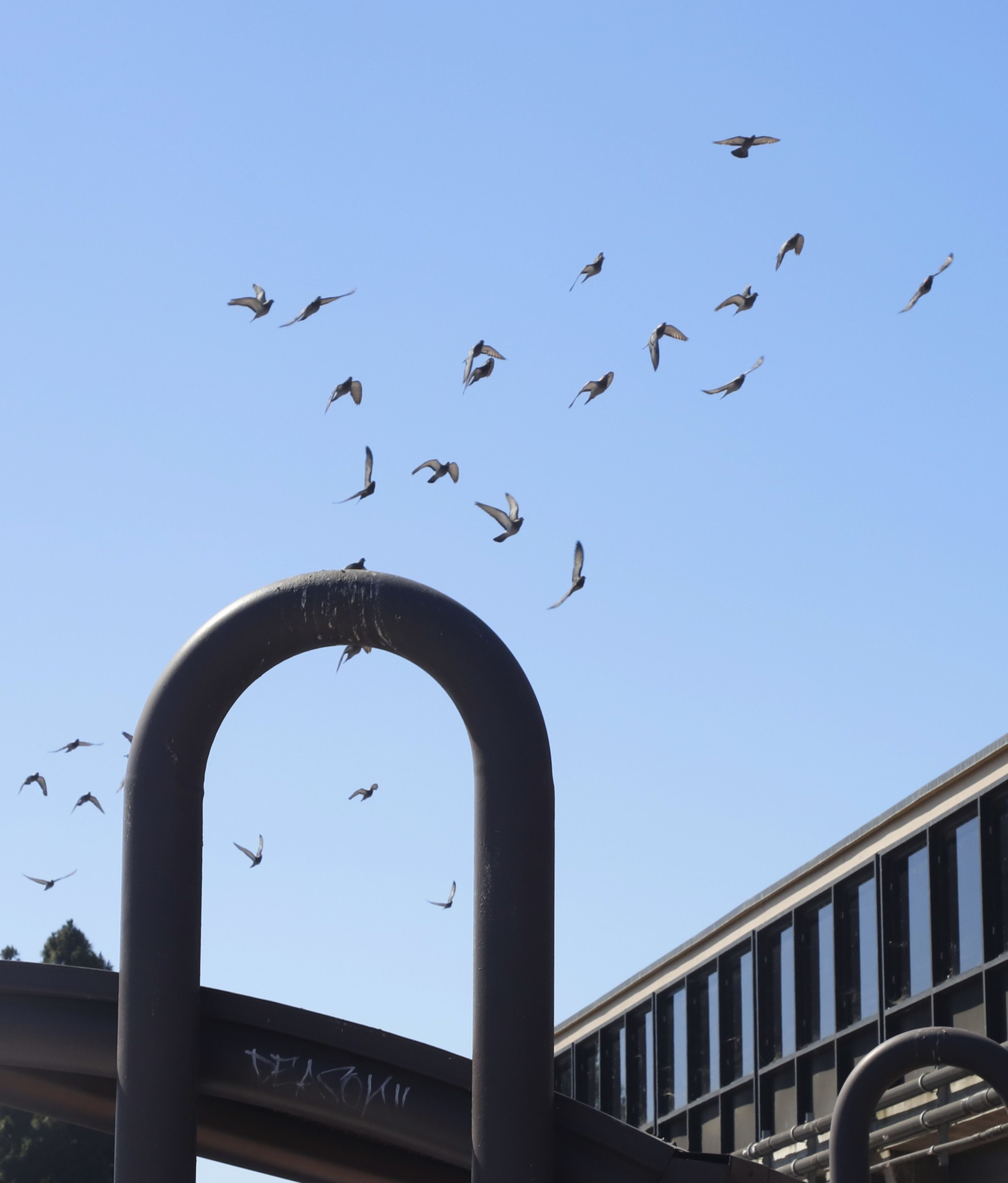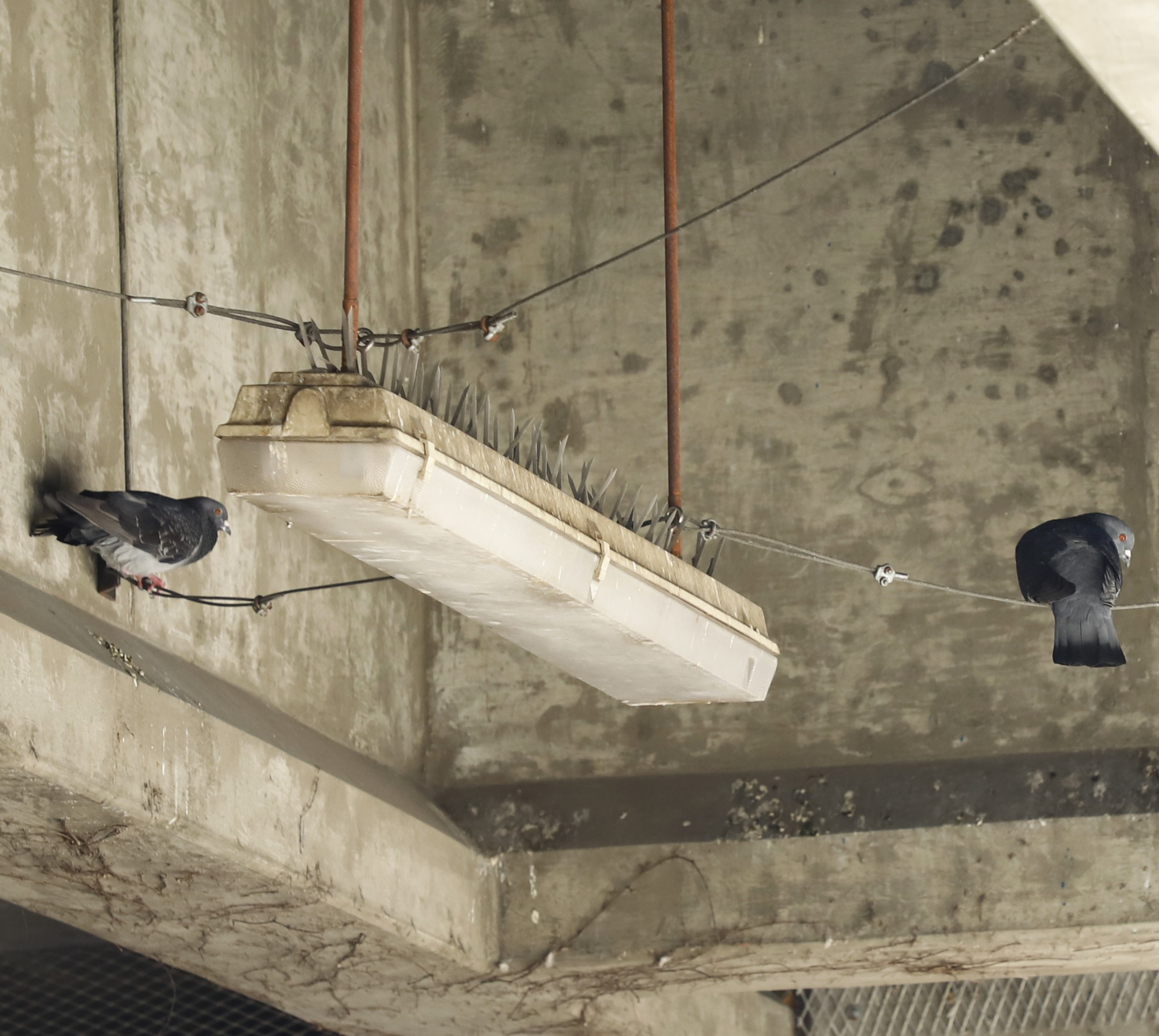As commuting crowds make their way to the Hayward BART station each morning, the arid town heats up and pigeons surrounding the station begin to multiply exponentially. Under the tracks, a chorus of baby birds hums. Inside the station, thousands of pigeon feathers adorn the ceiling. Bird spikes sprout from nearly every surface and in the station’s concrete crevices, pigeons hide in nests and on mounds of caked feces.
“We tried a number of different things to try to deter the pigeons,” BART spokesperson Jim Allison told The Standard. “Owl statues, netting, wire to prevent roosting, but nothing was really very effective.”
It’s unclear who came up with the idea of a pigeon patrol, but in 2022 BART initiated a pilot project with Falcon Force, a Los Angeles-based company that sends hawk and falcon handlers to scare off persistent pests. It didn’t take long for a Harris hawk named Pac-Man and his handler Ricky Ortiz to make waves across the Bay Area for scaring off pigeons in El Cerrito. Falcon Force and its team of expert handlers is certainly one of the more unique government-subsidized companies.
But lately, Falcon Force has stopped accepting media profiles, saying that its celebrity status has fueled a groundswell of criticism from pigeon lovers who show up to feed the pigeons and, in some cases, have harassed and threatened the lives of the hawk handlers.
“It just has not been pleasant,” said Vahé Alaverdian (opens in new tab), the founder of Falcon Force. “We go face-to-face with these people asking them not to feed [the pigeons], and they feel entitled to feed them. Some of our workers have been threatened, and we don’t need that intimidation.”


Pigeon vigilantes
When The Standard inquired with BART staff about the feud between pigeon and falcon advocates, one employee responded warily, “Whose side are you on? The falcons or the pigeons?”
Staff at BART stations—who did not want to be identified because employees aren’t allowed to speak to reporters—said the handlers have been a tremendous boon to keeping the stations clean. But the pigeons are relentless, and having people come to the station to feed them and harass the handlers has made the situation dirtier across the board.
“The whole reason we started this program was because people were getting pooped on—who wants that?” said one staff member. “The harassment has been unbelievable, and when they show up here and [the feeders] are here, they’ll leave and go to another station.”
Feeding pigeons is discouraged in most places across the United States and illegal in most cities in California. Those caught feeding pigeons in San Francisco can face fines up to $485 and in Hayward up to $300. But that hasn’t stopped pigeon vigilantes like Hussain Miakhan, a Hayward resident who has fed pigeons in and around the Hayward BART station for over a year.
“I see them eating discarded trash and food, so I buy seeds and feed them,” said Miakhan, who sometimes brings injured pigeons to a vet in San Rafael. “You’re going to spend taxpayer money to hire falconers to come in and scare them with their hawks—it just seems like a very inhumane and temporary solution to a problem. These birds have it very hard as it is in the Bay Area.”

Miakhan is a member of Palomacy Help Group for Pigeon & Dove Rescue & Adoption (opens in new tab), a Facebook group with more than 30,000 members worldwide. Based on a San Francisco nonprofit of the same name (opens in new tab) focused on adopting domesticated pigeons and doves, the Facebook group functions as an open forum where members swap tips on nursing feral pigeons and decry what they see as inhumane treatment of the creatures. Members have gone so far as to create burner accounts encouraging members to report Falcon Force to the California Department of Fish and Wildlife.
“The falconry is flashy and might look cool, but it’ll only help temporarily,” said Elizabeth Young, founder of the pro-pigeon nonprofit. “We see it as misguidance—it’s ineffective and inefficient. Let’s say you literally kill 10,000 feral pigeons. If there are scraps, food and trash, the pigeons will come back.”
As for the raptors, she compared the use of falcon abatement to dog-fighting, horse racing and SeaWorld, saying, “Their freedom was stolen at a genetic level.”
BART employees allege Miakhan has harassed them and the falcon handlers, but Miakhan denies these claims.
“If they feel threatened from me feeding pigeons, I don’t know what to say,” Miakhan said.

‘It’s called hazing’
Alongside their meteoric rise to stardom, the birds of prey have netted a comfortable paycheck.
BART originally invested $113,480 into its 18-month-long pilot program with Pac-Man and Ortiz before expanding it into a full-blown partnership with several falconers visiting up to 12 stations across the Bay Area. The birds were so popular that they even got their own BART-sponsored anime character with merchandise (opens in new tab).
The new Falcon Force contract has a base agreement of $1.3 million for three years with options to extend through 2028 for $2.7 million. BART recently spent the last of $1.6 billion in federal aid awarded in 2020, according to the agency’s website. And ahead of a projected $35 million deficit in 2026’s operating budget, BART has decided to hike fare rates by 5% starting in January.
According to Allison, the BART spokesperson, the results of the raptor teams are hard to deny.
“Anecdotally, we noticed a big change in that the pigeons were much less of a nuisance,” he said.

However, pigeon lovers have accused Falcon Force of murdering pigeons, with one Facebook post in June alleging that “BART is hiring falconers to slaughter pigeons en masse.”
“They are likely using other means to kill the birds,” wrote a person using the name Maricela Vk. “Two weeks ago, two falconers were spotted carrying out carcasses of dozens of pigeons and putting them into their vehicles at the South Hayward BART.”
According to Fish and Wildlife, an abatement permit does not authorize the killing of pigeons, and the capture of birds must be authorized by a federal permit.
A BART employee told The Standard that pigeons are killed often by the raptors, saying, “They’re not here to kill the pigeons even though that is what they end up doing—maybe three pigeons get killed a day.”
“Things happen, but it’s not something we want,” said Alaverdian. “What we do—introducing the presence of predators—it’s called hazing.”
Alaverdian said he had never seen his team kill a pigeon but referred to the natural predator-prey relationship at play. Members of his team who responded to phone calls and messages from The Standard declined to be interviewed for this story.
Young started Palomacy (a portmanteau of “pigeon” and “diplomacy”) in 2007 after working for an animal shelter in San Francisco and seeing pigeons not receive adoptions. Young said she would like BART to take a note from medieval Europe and install dovecotes (opens in new tab)—or at the very least keep public spaces like train stations cleaner so that pigeons wouldn’t go there in the first place. But with this new contract, there is no end in sight for the BART system-wide ornithological warfare.
“Every bite a feral pigeon takes is a bite the feral rat cannot,” said Young. “I don’t think anyone realizes the eco-balance here. The bottom line is humans need to be a lot cleaner.”

